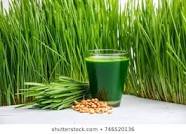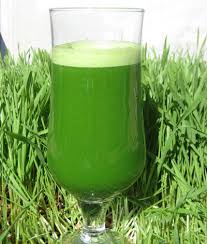
Diagnosed with Cancer? Your two greatest challenges are understanding cancer and understanding possible side effects from chemo and radiation. Knowledge is Power!
Learn about conventional, complementary, and integrative therapies.
Dealing with treatment side effects? Learn about evidence-based therapies to alleviate your symptoms.
Click the orange button to the right to learn more.
- You are here:
- Home »
- Blog »
- side effects ID and prevention »
- All about the Benefits, Usage and Side Effects of Wheatgrass
All about the Benefits, Usage and Side Effects of Wheatgrass
Wheatgrass is a type of food product made from the fresh grass of the wheat plant Triticum aestivum. It is considered as a highly potent and healthy food with lots of amazing benefits
Mostly available in liquid form, wheatgrass also exists in powdered form as well and is regarded by many nutritionists and scientists as an “alive food”. It can be consumed alone or as a dietary supplement in foods or drinks. Wheatgrass is rich in nutrients including vitamins, Amino acid and essential minerals such as magnesium, iron, and calcium. It is gluten-free too. Find 6 Benefits of Wheatgrass at Wheatgrass.com/pages/benefits-of-wheatgrass.
More recently, wheatgrass has received widespread attention due to various discoveries about its nutritional and health benefits. It has been the subject of several kinds of research and numerous vital benefits of this food have been established. This has led to it being processed into different forms for consumption including capsules, tablets, and powder in addition to the more common juice form. However, consumption in its most natural form remains the best way of taking it. Let us examine some of its benefits. These should convince you to try it out it if you are yet to:
- Source of essential minerals and vitamins: As earlier mentioned, wheatgrass is a source of diverse kinds of minerals and vitamin. It contains up to 17 amino acids of which 8 of these are essentials. These amino acids are not produced naturally by the body which means we have to depend on consumables like wheatgrass to get the required daily intake. That’s in addition to numerous other nutrients vital to maintaining health and well-being.
- Wheatgrass helps to fight against diseases: it is not new that eating veggies can help your body fight diseases. But Wheatgrass is even more potent for this compared to others. Not only does it promote overall health by supplying your body with essential nutrients, but several test-tube studies have also shown its potential to kill cancer cells and minimize its adverse effects as well. It may potentially help in the treatment of various forms of cancer including leukemia and mouth cancer. It will also strengthen the immune system, thus safeguarding the body against various forms of illnesses.
Also, because it is quite rich in fiber, Wheatgrass lowers cholesterol level and this will be highly beneficial for your cardiovascular system. It does these by slowing the absorption of carbohydrates into the bloodstream after consumption meals. Although, the body needs some cholesterol to produce bile and make hormones an excess amount can cause blockage to the blood flow thereby increasing the risk of heart diseases.
- Prevention of cell damage and Anti-inflammatory properties: inflammation is the immune system’s way of protecting the body from infections and injury. Conditions like heart diseases and cancer can also cause inflammations. However, wheatgrass is believed to contain components that may help prevent it. Its green color is attributed to the presence of the pigment chlorophyll. This pigment is believed to have anti-inflammatory properties as it can inhibit the production of the protein that triggers inflammation.
This leafy vegetable also contains antioxidants which prevent the accumulation of free radicals to reduce oxidative stress and prevent the damage of the cells. Studies also show that antioxidants may help to protect the body against some specific diseases and ailments, such as neurodegenerative diseases, heart diseases, and arthritis.
- Helps with mood and depression: Leafy green vegetables are a good source of folate and vitamin B12, and the consumption of these elements help boost the mood which reduces the risk of depression. The B-complex that it contains is also needed in the production of serotonin, which can also help alleviate depression rate.
- Eliminates bad mouth odor: Bad odor can be attributed to the dryness of the mouth. Wheatgrass can solve this and give you fresher breath by balancing the PH level of the body which is a common cause of mouth dryness. Additionally, it also aids the production of digestive enzymes.
- It aids blood sugar regulation: Frequent urination, severe headache, constant fatigue, and thirst are symptoms of high blood sugar. These have serious consequences which include skin infection, nerve damage, and vision problem. Regular consumption can help regulate blood sugar level thereby preventing all the side effects of high blood sugar including diabetes.
- It is good for weight loss: People that want to lose weight can add this product as a supplement to their diet. Although wheatgrass in itself might not help with this, thylakoids which are contained in this plant can increase satiety thus preventing over-eating and helping in the management of weight loss.
- It helps you look younger: In addition to all these benefits, taking wheatgrass also helps to slow down the aging process of the body. It contains vitamin K that helps to prevent age-related conditions, deficiency in vitamin K causes arterial and kidney calcification, bone fragility, and cardiovascular diseases. Click here for additional health benefits with scientific evidences that support them.
Limitations and side effects
Owing to its numerous benefits, almost everyone can take this vegetable in whatever form preferred. However, researchers advise that it should not be consumed during pregnancy and while breastfeeding. Also, while it is gluten-free, experts say that those who are gluten-sensitive should only take it after due consultation with their physician.
Wheatgrass has a lot of health benefits but it is not without some side effects too. These include headaches, nausea, and diarrhea. Not everyone experiences these side effects. Experts recommend discontinuing use or reducing the quantity of usage if you experience any of these side effects.
How to get it and recommended Usage
One of the many benefits of this vegetable is how readily available and accessible it is. It is widely available in powdered and juice forms but may also be sold as capsules and pills as well and can be gotten in any health food stores and even grocery shops both offline and online. It can also be grown at home and the process of converting it into consumable form is quite easy. For effectiveness, experts recommend taking it preferably 20 minutes before breakfast. Learn the recipe for preparing wheatgrass juice here https://www.indianhealthyrecipes.com/wheatgrass-juice-recipe/
Conclusion
It is important to note that extensive studies, especially on the effects and side-effects on humans, still seems to be a bit lacking. However, there are several pieces of evidence to support its potential health benefits in dealing with weight gain, reducing cholesterol level, blood sugar control, anti-ageing properties among other benefits stated above.



